Related Research Articles

The Battle of Bosworth or Bosworth Field was the last significant battle of the Wars of the Roses, the civil war between the houses of Lancaster and York that extended across England in the latter half of the 15th century. Fought on 22 August 1485, the battle was won by an alliance of Lancastrians and disaffected Yorkists. Their leader Henry Tudor, Earl of Richmond, became the first English monarch of the Tudor dynasty by his victory and subsequent marriage to a Yorkist princess. His opponent Richard III, the last king of the House of York, was killed during the battle, the last English monarch to die in combat. Historians consider Bosworth Field to mark the end of the Plantagenet dynasty, making it one of the defining moments of English history.

Henry VII was King of England and Lord of Ireland from his seizure of the crown on 22 August 1485 until his death in 1509. He was the first monarch of the House of Tudor.

Richard III was king of England from 26 June 1483 until his death in 1485. He was the last king of the Plantagenet dynasty and its cadet branch the House of York. His defeat and death at the Battle of Bosworth Field, the last decisive battle of the Wars of the Roses, marked the end of the Middle Ages in England.
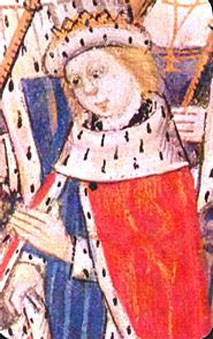
Edward V was King of England from 9 April to 25 June 1483. He succeeded his father, Edward IV, upon the latter's death. Edward V was never crowned, and his brief reign was dominated by the influence of his uncle and Lord Protector, the Duke of Gloucester, who deposed him to reign as King Richard III; this was confirmed by the Act entitled Titulus Regius, which denounced any further claims through his father's heirs.
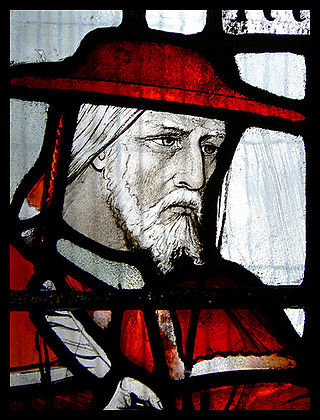
John Morton was an English cleric, civil lawyer and administrator during the period of the Wars of the Roses. He entered royal service under Henry VI and was a trusted councillor under Edward IV and Henry VII. Edward IV made him Bishop of Ely and under Henry VII he became Lord Chancellor, Archbishop of Canterbury and a cardinal.

Lady Margaret Beaufort was a major figure in the Wars of the Roses of the late fifteenth century, and mother of King Henry VII of England, the first Tudor monarch.

The Princes in the Tower refers to the mystery of the fate of the deposed King Edward V of England and his younger brother Prince Richard of Shrewsbury, Duke of York, heirs to the throne of King Edward IV of England. The brothers were the only sons of the king by his queen, Elizabeth Woodville, living at the time of their father's death in 1483. Aged 12 and 9 years old, respectively, they were lodged in the Tower of London by their paternal uncle and England's regent, Richard, Duke of Gloucester, supposedly in preparation for Edward V's forthcoming coronation. Before the young king could be crowned, however, he and his brother were declared illegitimate. Gloucester ascended the throne as Richard III.
Sir James Tyrrell was an English knight, a trusted servant of king Richard III of England. He is known for confessing to the murders of the Princes in the Tower under Richard's orders. William Shakespeare portrays Tyrrell as the man who organises the princes' murder in his 1593 play Richard III.

Richard III is a play by William Shakespeare. It was probably written c. 1592–1594. It is labelled a history in the First Folio, and is usually considered one, but it is sometimes called a tragedy, as in the quarto edition. Richard III concludes Shakespeare's first tetralogy and depicts the Machiavellian rise to power and subsequent short reign of King Richard III of England.

Francis Lovell, 9th Baron Lovell, 6th Baron Holand, later 1st Viscount Lovell, KG was an English nobleman who was an ally of King Richard III during the War of the Roses. Sir William Catesby, Sir Richard Ratcliffe and he were among Richard's closest supporters, famously called "the Cat, the Rat and Lovell our dog" in an anti-Ricardian squib. In addition to being an ally, Lovell is described as Richard's best friend.
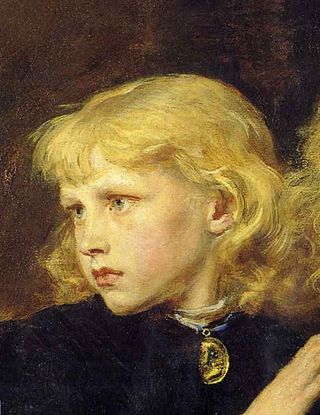
Richard of Shrewsbury, Duke of York, was the sixth child and second son of King Edward IV of England and Elizabeth Woodville, born in Shrewsbury. Richard and his older brother, who briefly reigned as King Edward V of England, mysteriously disappeared shortly after their uncle Richard III became king in 1483.

In the First Folio, the plays of William Shakespeare were grouped into three categories: comedies, histories, and tragedies. The histories—along with those of contemporary Renaissance playwrights—help define the genre of history plays. The Shakespearean histories are biographies of English kings of the previous four centuries and include the standalones King John, Edward III and Henry VIII as well as a continuous sequence of eight plays. These last are considered to have been composed in two cycles. The so-called first tetralogy, apparently written in the early 1590s, covers the Wars of the Roses saga and includes Henry VI, Parts I, II & III and Richard III. The second tetralogy, finished in 1599 and including Richard II, Henry IV, Parts I & II and Henry V, is frequently called the Henriad after its protagonist Prince Hal, the future Henry V.
Polydore Vergil or Virgil, widely known as Polydore Vergil of Urbino, was an Italian humanist scholar, historian, priest and diplomat, who spent much of his life in England. He is particularly remembered for his works the Proverbiorum libellus (1498), a collection of Latin proverbs; De inventoribus rerum (1499), a history of discoveries and origins; and the Anglica Historia, an influential history of England. He has been dubbed the "Father of English History".
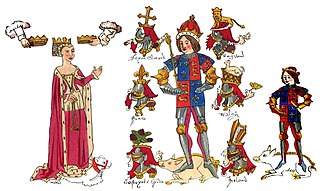
Ricardians are people who dispute the negative posthumous reputation of King Richard III of England. Richard III has long been portrayed unfavourably, most notably in Shakespeare's play Richard III, in which he is portrayed as murdering his 12-year-old nephew Edward V to secure the English throne for himself. Ricardians believe these portrayals are false and politically motivated by Tudor propaganda.

Francis II was Duke of Brittany from 1458 to his death. He was the grandson of John IV, Duke of Brittany. A recurring theme in Francis' life would be his quest to maintain the quasi-independence of Brittany from France. As such, his reign was characterized by conflicts with King Louis XI of France and with his daughter, Anne of France, who served as regent during the minority of her brother, King Charles VIII. The armed and unarmed conflicts from 1465 to 1477 and 1484–1488 have been called the "War of the Public Weal" and the Mad War, respectively.

In England and Wales, the Tudor period occurred between 1485 and 1603, including the Elizabethan era during the reign of Elizabeth I (1558–1603). The Tudor period coincides with the dynasty of the House of Tudor in England, which began with the reign of Henry VII. Under the Tudor dynasty, art, architecture trade, exploration and commerce flourished. Historian John Guy (1988) argued that "England was economically healthier, more expansive, and more optimistic under the Tudors" than at any time since the Roman occupation.

In Shakespearean scholarship, the Henriad refers to a group of William Shakespeare's history plays depicting the rise of the English kings. It is sometimes used to refer to a group of four plays, but some sources and scholars use the term to refer to eight plays. In the 19th century, Algernon Charles Swinburne used the term to refer to three plays, but that use is not current.

"The Foretelling" is the first episode of the BBC sitcom The Black Adder, the first series of the long-running comedy programme Blackadder. It marks Rowan Atkinson's debut as the character Edmund Blackadder, and is the first appearance of the recurring characters Baldrick and Percy. The comedy actor Peter Cook guest stars as King Richard III.
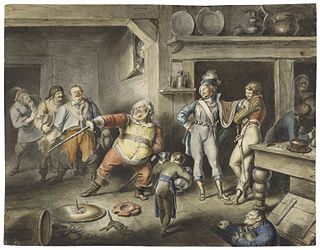
History is one of the three main genres in Western theatre alongside tragedy and comedy, although it originated, in its modern form, thousands of years later than the other primary genres. For this reason, it is often treated as a subset of tragedy. A play in this genre is known as a history play and is based on a historical narrative, often set in the medieval or early modern past. History emerged as a distinct genre from tragedy in Renaissance England. The best known examples of the genre are the history plays written by William Shakespeare, whose plays still serve to define the genre. History plays also appear elsewhere in British and Western literature, such as Thomas Heywood's Edward IV, Schiller's Mary Stuart or the Dutch play Gijsbrecht van Aemstel.
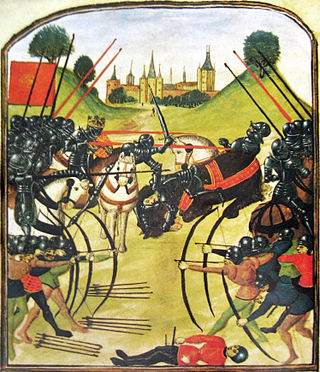
The Wars of the Roses (1455–1487), known at the time and for more than a century after as the Civil Wars, was a series of civil wars fought over control of the English throne in the mid-to-late fifteenth century. These wars were fought between supporters of two rival cadet branches of the royal House of Plantagenet: Lancaster and York. The wars extinguished the last male line of the House of Lancaster in 1471, leading to the Tudor family inheriting the Lancastrian claim to the throne. Following the war and the extinction of the last male line of the House of York in 1485, a politically arranged marriage united the Houses of Lancaster and York, creating a new royal dynasty which inherited the Yorkist claim as well, thereby resolving the conflict.
References
- ↑ Tillyard, E. M. W. Shakespeare’s History Plays. Chatto & Windus (1944) ISBN 978-0701111571
- ↑ Breverton, Terry (15 May 2016). Henry VII: The Maligned Tudor King. Amberley Publishing Limited. ISBN 978-1-4456-4606-0.
- ↑ Egan, Gabriel. "Shakespeare". Google Books. Edinburgh University Press. Retrieved 5 April 2023.
- ↑ Cooper, John. "The Tudor Monarchy" (PDF). Cengage Learning EMEA. State Papers Online. Retrieved 3 April 2023.
- ↑ Wilson, Jeffrey. "Shakespeare and Game of Thrones". Google Books. Routledge. Retrieved 5 April 2023.
- ↑ Barker, Simon. "The Mary Rose revisited: Tudor myth, popular history and "the tears that England owes". ProQuest. Journal of Popular Culture. ProQuest 1297357115 . Retrieved 3 April 2023.
- ↑ Reese, M. M. The Cease of Majesty: A Study of Shakespeare's History Plays, New York: St Martin's Press, 1961
- ↑ Kendall, Paul Murray. Richard III, New York: W. W. Norton, 1956
- ↑ Kendall, Paul Murray. Richard III: The Great Debate: Sir Thomas More's History of King Richard III and Horace Walpole's Historic Doubts on the Life and Reign of King Richard III, 1965
- ↑ Gillingham, John. The Wars of The Roses: Peace and Conflict in Fifteenth-Century England. Louisiana State University Press, 1981
- ↑ Grene, Nicholas. Shakespeare's Tragic Imagination. Springer (2016) ISBN 9781349249701
- ↑ Brustein, Robert Sanford. The Tainted Muse: Prejudice and Presumption in Shakespeare and His Time. Yale University Press, 2009 ISBN 9780300115765 p. 135
- ↑ Shakespeare, William. Richard II. Act 4, sc. i
- ↑ Warner, John. "Richard II: Act Four, Scene One". Youtube. English: The John Warner School. Retrieved 3 April 2023.
- ↑ Carleton, Charles. Royal Warriors: A Military History of the British Monarchy. Routledge, 2014. p. 66. ISBN 9781317873778
- ↑ Gross, Charles. The Sources and Literature of English History from the Earliest Times to about 1485. Longmans, Green & Company, 1900. p. 297.